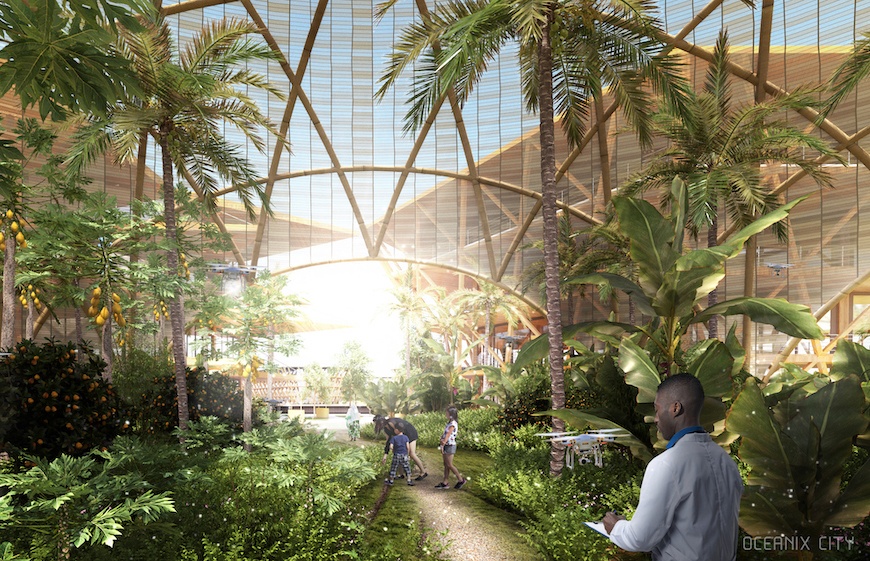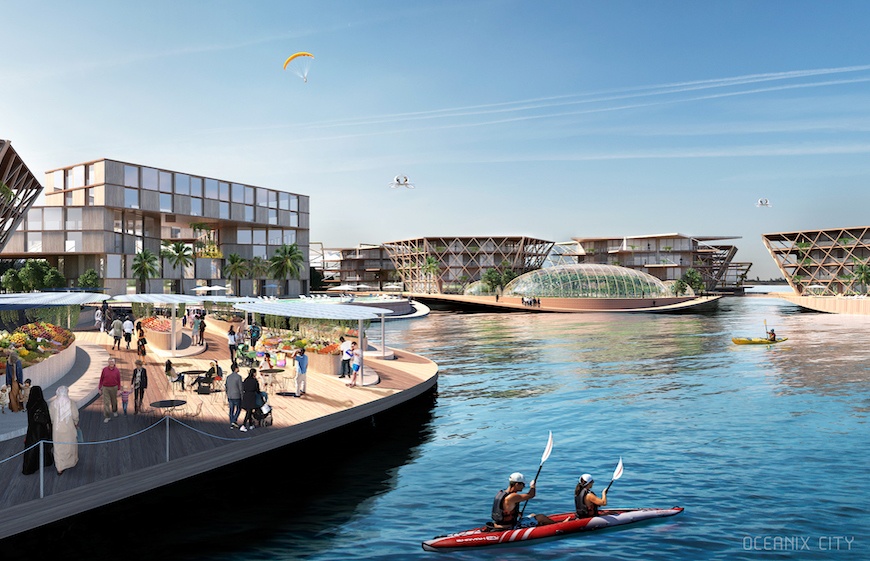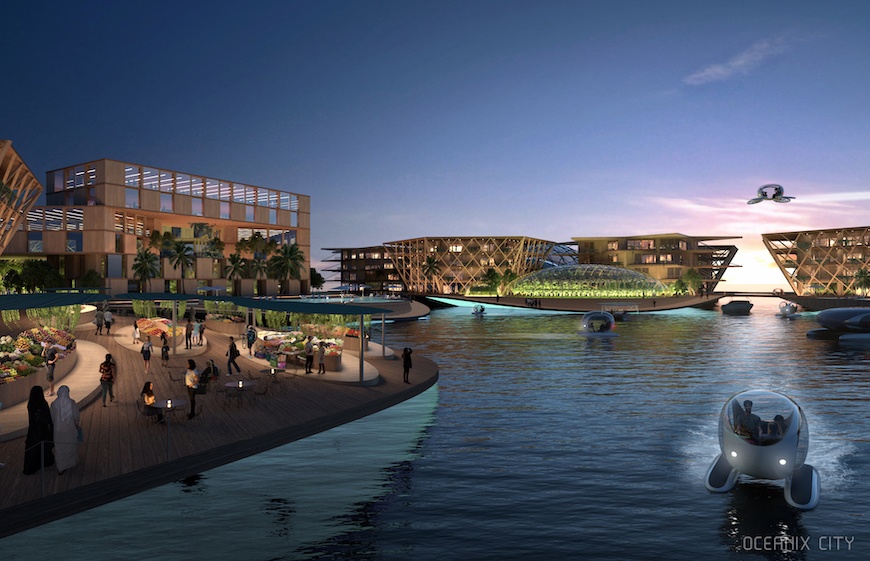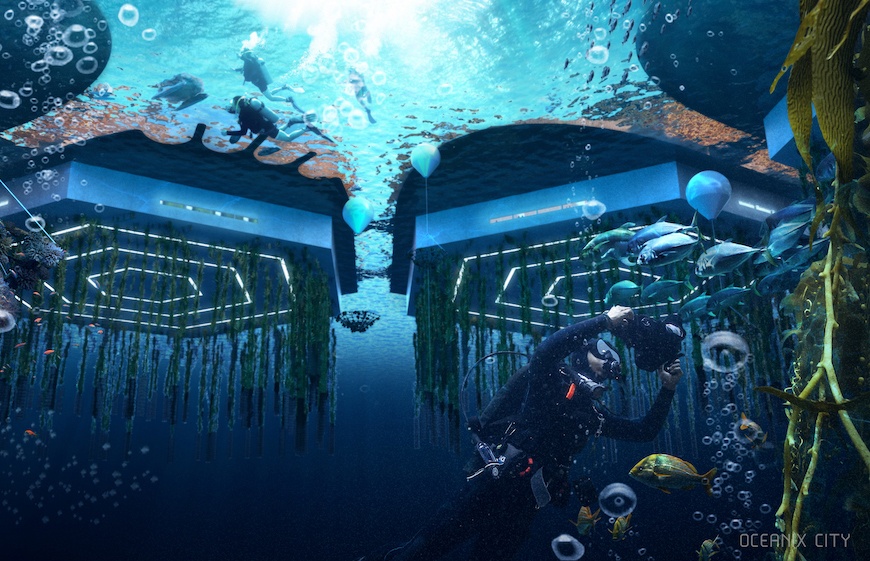The UN Unveils a Floating City to Save Us When Water World Happens IRL
The layout of the innovative archipelago, which was designed by the architecture firm BIG along with the MIT Center for Ocean Engineering, seeks to mitigate one of the world's most pressing climate change issue: rising sea levels. The National Ocean Service has previously warned that global sea levels are rising at an increasing rate of about about one-eighth of an inch per year. If that doesn't sound like a lot, know this: The small increase can lead to more concerning storm surges for the nearly 40 percent of the population that lives near the coast. The isle would reportedly be stormproof (with enough warning) and completely incapable of being flooded.
If you're having trouble picturing a floating island, imagine a cluster of smaller land masses that form a flower-shaped view from overhead. When and if the conceptual city becomes an IRL housing option, residents of these floating islands would have the ability to grow their food, create their own energy—all while living a zero-waste lifestyle. The engineers explain that the city will operate like its own organism, working with the sea life below to create a symbiotic ecosystem.

{{post.sponsorText}}
“It is not a question of one versus the other. The technology exists for us to live on water, without killing marine ecosystems,” Mark Collins Chen, co-founder and CEO of OCEANIX tells IFLScience. “It is our goal to make sure sustainable floating cities are affordable and available to all coastal areas in need. They should not become a privilege of the rich.” Reportedly, there will a waitlist for this seatopia soon, but in the meantime, check out some pics of the future's most sustainable Zip code.
Check out the future of real estate: the floating city.




If you're suddenly in the mood to go island-hopping, here are 9 gorgeous islands to visit that aren't Hawaii. And if you haven't heard of the Faroe Islands yet, here's why they belong on your bucket list.
Loading More Posts...